Guest post by Brendan Gahan (@BrendanGahan), a YouTube marketing expert. Gahan was Forbes 30 under 30 for Marketing & Advertising and has helped Fortune 500 brands with their YouTube and social media marketing.
Let’s face it: YouTube has become big business. One billion unique monthly users? Yes. Six billion hours of video watched each month? Yes. Over 100 hours worth of video uploaded each minute. Yes. All, yes. The dominant player in the online video space continues to blanket the web at an impressive scale. The site has also sparked a series of new media companies, conventions, and veritable stars. Smosh, the #2 most subscribed YouTube channel, was acquired by Alloy Digital Media, and The Annoying Orange web series is now a TV show on the Cartoon Network. YouTube is one hell of a force.
YouTube has spawned massive events, BufferFestival in Toronto, drew thousands, and VidCon, the world’s largest YouTube gathering and conference, wrapped its 4th installment with an impressive 12,000 attendees. YouTube Multi-Channel Networks (MCN’s) have cropped up, raised investment dollars, and are largely being hailed among the press as the future of Hollywood and Madison Avenue.
However, even with all the success, there is tension building within the relatively insulated YouTube community. Discontent is brewing–with numerous blogs and pundits speculating around the value that YouTube offers content creators, the opportunity cost of investing in the platform, and uncertainty around the future of MCN’s.
The core issue is largely around how ad revenue on the platform is split with creators. YouTube allows individuals to become “YouTube Partners.” Partners agree to a series of terms (i.e., avoid uploading copyrighted video) in exchange for the right to have ads run across their videos. All ad revenue is (reportedly) then split 45/55 in favor of the creator, and on average creators generate $2-3 CPM’s with Google’s inventory. If a creator is with a network, the revenue is typically split again (with the another 30% going to the MCN). Jason Calacanis, a familiar personality in the startup space, recently inserted himself into the online video conversation by leading an anti-YouTube push – calling YouTube “a horrible *business* deal for content creators.”
Content Consumption And Production Has Changed
Certainly paying a higher percentage would be great for creators, at least in the short term, but a) this is beyond anyone’s control, and b) why would YouTube do this? Google has invested a great deal of time, money and resources into YouTube and they have a right to profit from the business that they operated at a loss for years. Those points aside, the reality is that content creation and distribution has changed radically and YouTube provides a platform for developing an audience and expensive production is not a requirement.
We now watch 6 second vine videos on our mobile phone and parody twitter accounts are getting TV deals. Content creation is in the hands of the masses. In today’s media landscape content has been commoditized and audience is the new currency.
The traditional Hollywood rulebook has been thrown out the window and the reality is – one no longer needs writers, editors, producers, and sales team to build a content business. While you certainly could use all those resources, they are by no means requirements to be successful on YouTube (much in the same way Brian can publish a blog and no longer needs an editor and printer or adapt to a traditional publishing model). The number most subscribed YouTuber (beyond YouTube’s own channel), PewDiePie, has achieved 15 million subscribers with content that is largely made from a webcam. He’s also, far from the exception, a quick look at the top 10 most subscribed channels on YouTube reveals that the majority (six) have cultivated communities largely based on their personality – using production equipment that anyone could pick up at their local Best Buy.
Keeping this new paradigm in mind–it makes no sense to apply an old media production approach and methodology to a new media ecosystem.

(Via VidStatsX)
We’re All Content Creators
In every social network, creators are consumers and consumers are creators. On Facebook, for example, we share stories, upload photos and videos, chat with friends, and leave comments — constantly blurring the lines between content creation and consumption. However, while Facebook is a service that over 1 billion people use regularly, it’s also a platform where content creators do NOT get paid a portion of the $1.6 billion in annual ad revenue being generated.
This is part of a social contract that we have with media companies, brands and consumers. Media companies serve us ads in exchange for the content we consume. However, YouTube is different–they serve ads AND pay content creators for the eyeballs they generate – but many are upset with the revenue split. At the same time they’re happily using sites like Twitter and Facebook, and not receiving a dime.
YouTube is a social network where users can create content. Creators on YouTube are able to monetize their efforts directly on the platform. Facebook, Twitter, Vine, and Instagram are also social networks where users can create content. But THESE content creators are UNABLE to monetize their efforts directly from these platforms.
To their credit, YouTube has successfully upended the traditional social contract, allowing us — as both creators and consumers — to generate income from our content. If we’re upset with how little YouTube pays creators, then shouldn’t we be even more upset that Facebook and Twitter pay nothing at all? Isn’t this a double standard?
Youtube Is The Launch Pad
Critics have pointed out that it’s difficult to make a living based on YouTube’s revenue split. That may be the case for many creators. However, the platform allows them to build an audience. Many creators understand this and are leveraging their audiences for brand deals, merchandising, and in some cases, even making the jump to traditional entertainment.
The revenue split on YouTube may be less than ideal, but it’s a means to an end–an audience. As investor Mark Suster adeptly points out, YouTube is the “world’s best customer acquisition for video consumers to get them to come to your O and O.” For top YouTubers, leaving YouTube is akin to Michael Phelps avoiding the Olympics because it doesn’t pay well. There is no other worldwide stage that compares.
YouTube has provided an infrastructure, which, beyond YouTube’s shear scale (with 1 billion monthly unique monthly users), has been aggressive in creating a sticky experiences for both creators and consumers alike. Much more than a video-hosting platform, YouTube is the second largest search engine. Furthermore YouTube facilitates connections to cultivate audiences, via:
- Subscriptions (which is only getting better with recent updates)
- Presence in 56 countries across 61 languages
- Multi-platform distribution via Mobile and even Xbox apps
- Education and production resources for creators to use free of charge
- The list goes on
Ten years ago, creating webseries that would get millions of viewers without a significant investment was virtually IMPOSSIBLE. You would need to build a site, your own video player, hosting service, then begin to work on cultivating an audience. Today, we live in an age when a little desire and a webcam is all one needs to be a content creator–YouTube provides the stage. The platform has enabled just about anyone to be a filmmaker, vlogger, and entrepreneur. And for the first time in history, content creators can have an audience of millions without having a cable, network, or theatre distribution deal.
Google And MCN’s
Lastly, trend stories around the state of MCN’s have speculated that YouTube would rather see MCNs disappear and MCN’s must develop an off YouTube platform to survive. Regardless of the latter, YouTube’s actions don’t support the former. Google, which owns YouTube, lead a $35 million round of funding in one of the MCNs, Machinima, earlier last year.
Furthermore, MCNs have contributed to YouTube’s growth and bottom line in several areas. Hank Green — YouTube creator and co-founder of VidCon — echoed this sentiment in the comments of Calacanis’ blog post, stating that YouTube loves MCN’s for two reasons: “1. When an MCN gets acquired or takes investment, that sets a value on the YouTube ecosystem. So if a network (simplified numbers here) with a million monthly views gets acquired for a million dollars, analysts can argue that content is worth a dollar per monthly view, which drastically increases the value of YouTube and thus Google’s stock price. 2. YouTube is basically outsourcing support and liability to MCNs in exchange for zero dollars. YouTube has all but stopped supporting partners. Instead, partners join up with MCNs and the MCNs provide support. MCNs also act as a liability buffer, taking responsibility for potential copyright and other legal problems so that YouTube doesn’t have to worry about it.”
MCNs also act as a massive sales force for YouTube. Each sale an MCN makes is a sale for YouTube — whether it’s indirectly, through dollars going to creators for brand integrations, or directly via pre-roll and banner inventory.
Finally, whether or not MCN’s are successful in the long run, is up to MCN’s, but it certainly wouldn’t be because Google is ‘unfair’. By comparison, Facebook is harsher to third parties building businesses on their platforms. Facebook has a track record of replicating features of competitive businesses as well as shutting off access to those with features similar to their own – most recently shutting down API access to Vintage Camera (an instagram style photo app) and recently blocked messaging app Message Me. Even with YouTube’s recent announcement, that they will get involved with disputes between MCN’s and creators, plenty of notice to adjust to YouTube’s guidelines. No one is being shut down, Facebook style, without notice.
Several MCN’s have cultivated off-YouTube online video presences, which could be perceived as direct competition with YouTube. Most recently Alloy merged with Break, Maker acquired Blip, and last year The Collective purchased Metacafe. Rather than revoking access to the platform the way Facebook has to many companies by claiming violations of a section of its terms of service related to “competing” social networks, YouTube has allowed (if not encouraged) these moves to take place.
Audience Is The Asset
For creators and MCN’s the opportunity lies far beyond Google’s revenue splits – instead it’s with the ability to build sustainable businesses and brand. Utilizing YouTube as the ultimate acquisition funnel, large and small creators are creating alternative revenue streams capitalizing on their own IP – selling merchandise, concert and speaking tours, mobile games and even magazines. Finn Harries (one half of YouTube phenomenon Jacksgap), described YouTube as a “great launch pad for our [Jacksgap] brand. We were able to test content that worked, interact with and gain an audience and being able to monetize our videos allowed us to invest our revenue into expanded our brand into other areas like our .com and the digital store front, which is launching soon. However even better than that Youtube has allowed us to create a company.”
Final Thoughts
So where does this leave us? There’s room for improvement on YouTube, and it would be great for creators and MCN’s if YouTube increased the percentage they pay creators. That said, YouTube has been a forgiving partner — providing a revenue stream to creators, and allowing businesses to replicate many of their features in a way that a Facebook would never allow.
For many YouTubers, and MCN’s, the opportunity lies far beyond adsense and revenue splits – instead it’s with the ability to build businesses and brands. The resources and sticky experience YouTube facilitates has allowed creators to cultivate audiences they’d be unable to do independent of the platform. The visibility, communication, and connection with audiences is invaluable. What remains to be seen is which players will develop a profitable model from these communities and which ones will not.
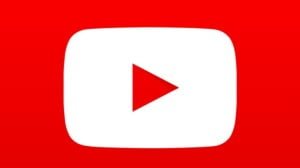
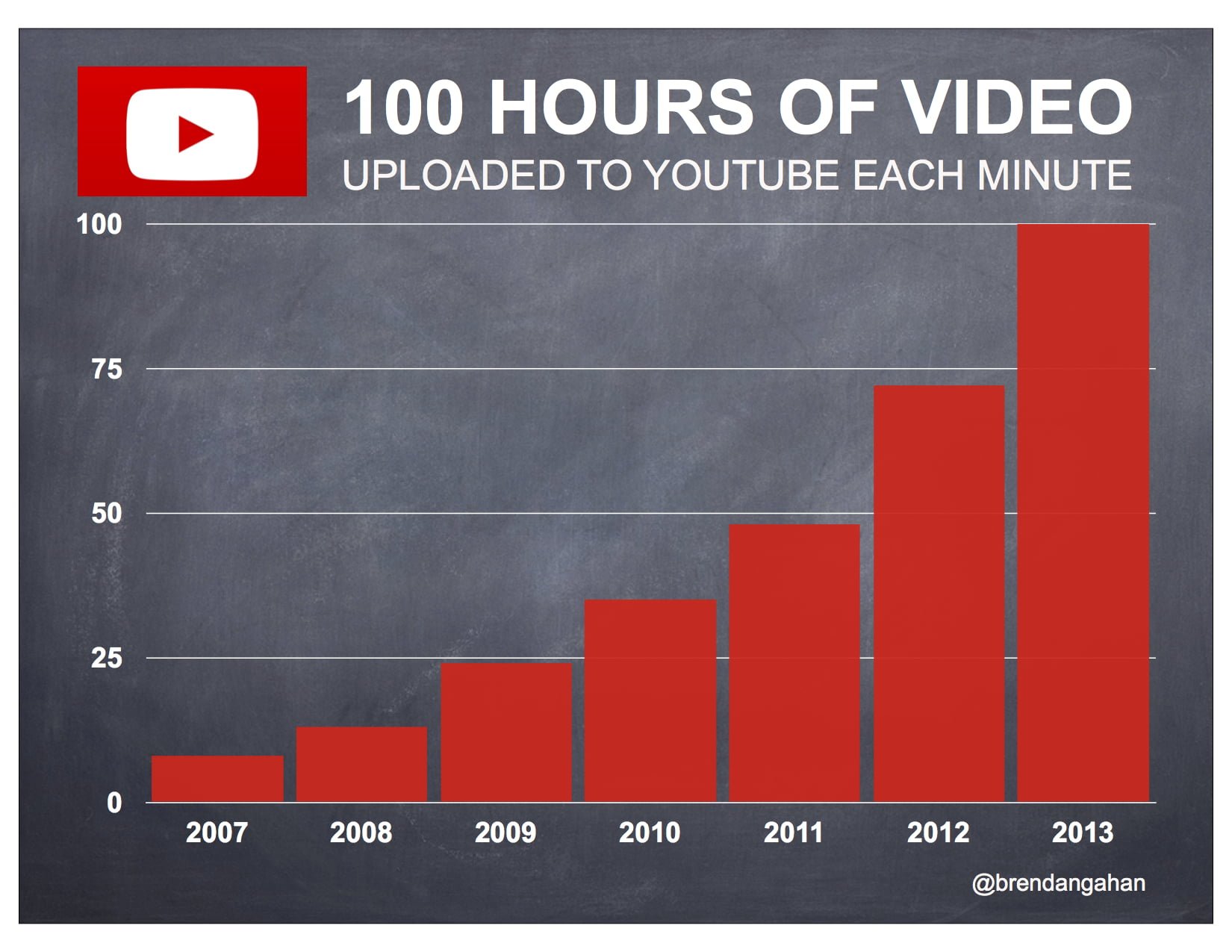
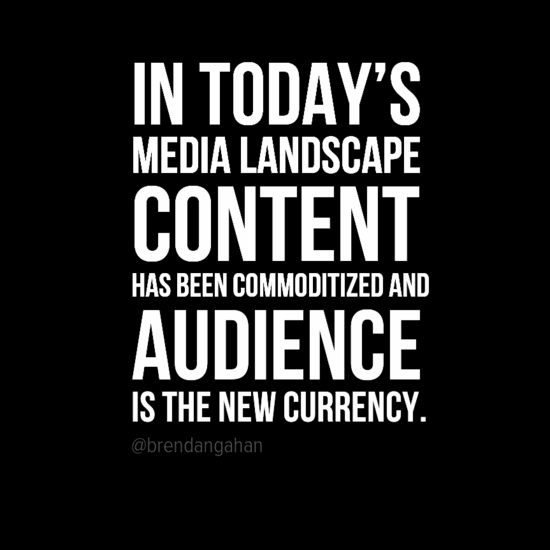
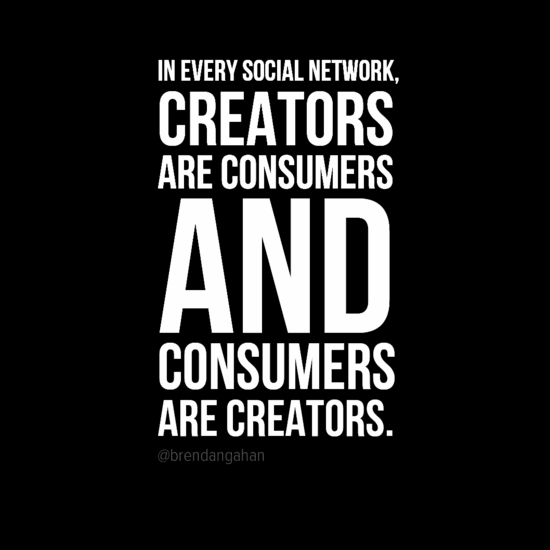
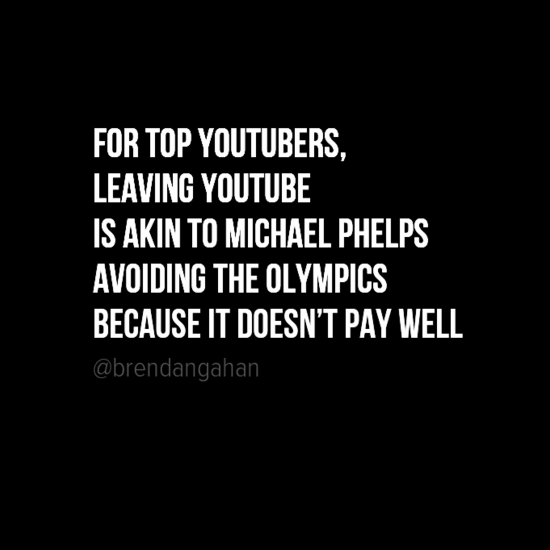
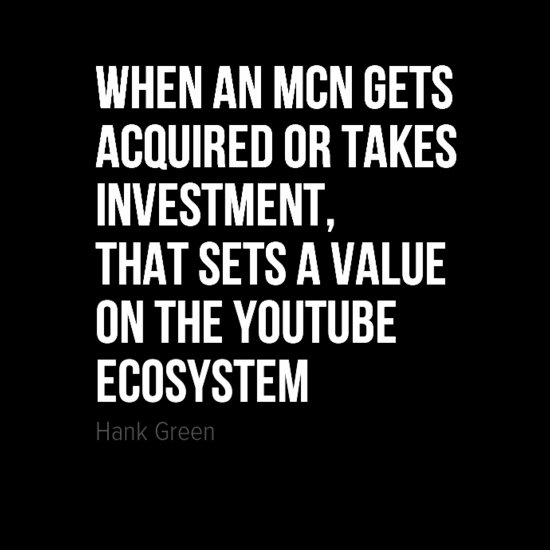






Excellent article, Brendan. As a YouTuber I can relate to this on so many levels.
Thanks Joe!
Brendan, you make a really good point about how Facebook and Twitter don’t compensate content creators. I think content creators that are attracting an audience need to focus on making more money on the back-end. Some do a great job with that while others don’t even realize those opportunities exist.
Thanks Bill! Yeah, they’re virtually identical when you think about it. It’s all about sharing content your creating. YouTube rewards those that create content far more than other platforms. It’s interesting. I’m shocked I don’t hear more people asking FB & Twitter to pay them and Facebook will actually use you in their ads! Haha.
Great article, Brendan. Audience is definitely the new currency. Half of my monthly YouTube income is in brand deals because I’ve been able to gain an audience and connect with brands who want to continually reach my audience and connect with them.
Thanks Austin! Yeah, the old rules don’t apply. No kicking back and just letting the system take care of you. You’ve got to hustle. Drinks soon!
Still the best! Thanks for the article, Brendan!
Phil! #FTW
as i agree with most of this article. there are some pounts i’d like to make. Content creators such as myself do not upload our videos to facebook or twitter. infact we are discouraged that we have to pay for our complete audience that we brought to these sites to see what we post.
secoundly Youtube does support its partners. I have a manager assigned to me who solves any problems i have with in 24 hours of sending an email. I am not the only one who gets this support. I just wanted to clear that up. thanks
Thanks Jack, I’m not saying everyone is uploading video to Facebook and Twitter (although Facebook video is making a big push with the RWJ deal, and that’s a whole separate rabbit hole to go down). The point I am trying to make is that you’re creating content. YouTube pays creators for content. The others do not. I think that’s an interesting dynamic that isn’t brought up when people are talking about the CPM’s on YouTube. If one is paying for content why not others, or vice versa? Regardless, I think the real value is in the audiences and communities built and how savvy one is at wielding those audiences. BTW – What’s your channel?
Brilliant article Brendan. There’s some really well balanced arguments here. I think you’ve laid out the pro’s and con’s of Youtube very accurately.
Thanks Finn! Appreciate the quote and insight btw 🙂
Great insights. Much appreciated!
For sure. Thanks for taking the time to check it out! Glad you liked it!
Enjoyed this piece Brendan, thanks!
Thank you Dane!
Great as always Brendan!
🙂
Really enjoyed the piece. The commoditization of content is also making way for an additional driver of the media landscape: context.
#true
Definitely it will grow because people want to get things by 1 click and it is facilitating them.
Great insight @brendangahan leveraging video as social content
Thanks Doug. Really appreciate it!
Hi Brian. Great post! Mark Suster recently spoke about why Youtube’s aggressive CPM model will allow a new entrant. For example, what happens when Amazon launches it’s own short form video distribution platform? Bye bye youtube, and their 45% rip… but Mark Suster said it best… https://www.youtube.com/watch?v=u0s-vqF-2K0&feature=youtu.be&t=50m21s via youtube of course 🙂
I completely agree with most of the points you offer in this article. Yes, YouTube might not be the best reliability if you need a job, but for many YouTube is a hobby that just so happens to earn them a tiny extra amount of pocket money.
I believe YouTube is a great way to share your passions and gain an audience’s critique. However, I also think it has become such a big phenomenom now, it has almost become a trend to be a YouTuber, taking the magic off it a bit. People nowadays share almost as intimate details about their private lives on YouTube as they do on Facebook etc. I have to admit that scares me a bit! But I’d have to say my overall opinion on YouTube is that it’s great! It makes people happy.
Thanks for the thoughts Freja! Agreed, YouTube is blowing up. The sheer amount of people creating on the platform is amazing (100 hours uploaded each minute, etc).
Interesting! Key take away: ecosystem. It is a part, not the foundation…but an important brick.